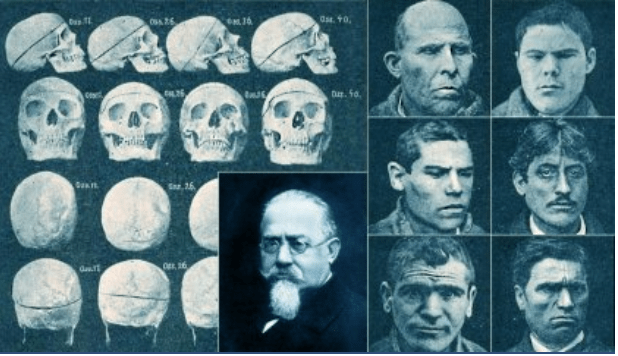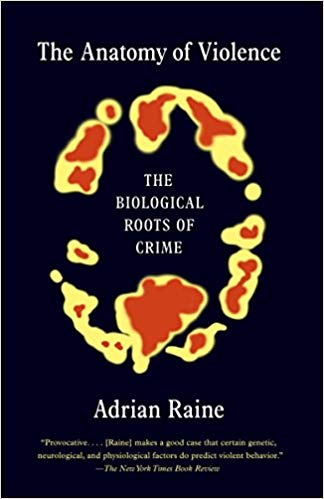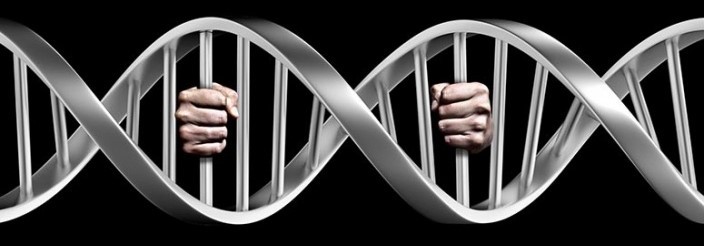Etiology blindness – a wonderful stroke of luck?
Written and interview by: Petra Šprem
The reason for the interest in the explanation of why people hurt others and do other ‘bad’ and violent things lies in the insatiable human desire to explain the world around them rationally. For this reason, metaphysical concepts such as good and evil are the subject of interest of numerous disciplines such as philosophy, anthropology, psychology, sociology and theology. On the other hand, perhaps the word etiology incorrectly denotes the field of inquiry because it does not in fact deal with the causes in the true sense of the word (if A then B). Instead, it studies certain risk factors that might lead to the violent delinquency or at least increase one’s chances of committing violent act. This mean that the perhaps etiology findings will never be able to answer why violence happens, in a sense that a certain variable will always leads to violence and not just potentially. However, by using this label, perhaps the criminology has unintentionally created an illusion that finding a solution regarding the causes of crime is not only possible, but also scientifically provable.
The human nature in itself is relentless and its complexity and layered essence does not permit any science to come quite close to understanding it completely. Despite the attempts of various disciplines, it seems like we will never be capable of answering the question where does the root of violence lie. However, some theories do offer very interesting answers to that question. In the further text, I will consider the endogenous theories that have an important role in the study of violence etiology and that raise the unavoidable question regarding our society’s safety. That is, if the findings of these theories do determine the cause of forbidden human behavior, what value would they have in our society and is the fact that we will never be able to discover the full scope of the causes actually a mitigating fact for humanity?
The number of theoretical approaches in criminological etiology is almost interminable. However, according to the principle of the Occam’s razor and based on the thesis of human determining nature, some of these theories have provided a possibility that we are on the verge of a breakthrough that would answer the aforementioned eternal question. These endogenous theories claim that our behavior is determined with inner factors created by biology. Moreover, every now and then, newspapers convey news such as “Scientists found a criminal gen” or “Research showed – some people are born evil”. Headings of this kind are shocking and scary but at the same time comforting, for they lead us to believe we have finally found the answer (or for some – an excuse).
The crucial importance of biological factors regarding the etiology of crime is not a novelty; the first mention of it dates back to the 1870s, in the works of the founder of criminology – Cesare Lombroso. Lombroso described the features of a ‘born criminal’, and after observing the prisoners, he concluded that the criminals differ from non-criminals in certain physical traits. Such theories are also found today in a somewhat more sophisticated form.

Lombroso, perhaps influenced by his medical background, strongly believed that Specific criminals, such as thieves, rapists, and murderers, could be distinguished by specific physical characteristics.
Today, there are no serious claims that the biology is the exclusive and fully determinative cause of crime. Instead, it is believed that biology has either a smaller or a larger effect on one committing a crime, in combination with the surroundings (the eternal nature vs. nurture dilemma). However, British psychologist Adrian Raine discovered numerous facts supporting the thesis that biology plays a much greater role in the etiology of the crime than we care to admit. While providing an insight into interesting data and different experiments, Raine’s bestseller “The Anatomy of Violence: The Biological Roots of Crime" leaves no criminology expert indifferent.
Beside the scary fact that nature has overpowered us, if such theories were to obtain a status of a scientific paradigm, they would shake the foundations of the criminal law to its core.
Therefore, genetic science presents a huge challenge to criminal law for it disturbs the familiar criminal law institutes and concepts that have been established for many, many years. The potential discovery of a criminal gene would turn the criminal law world upside down. It would in turn negate the assumption that we are all born as free human beings that make choices that then define our lives and make us liable for our actions. Moreover, as scary as it may seem, this kind of revelation would lead to consequences that are even more tragic. Arising would be the issue of guilt, responsibility, prevention, revitalization of eugenics, purpose of punishment, policy on crime and security and finally the significance of criminal law in general. What would the human race do with the knowledge of finding out who will become a murderer or a rapist at birth? It seems like the Spielberg’s vision of the future from the movie “Minority Report” was not that far away from reality.
Despite the fact that today all relevant scientific theories and authentic research distance themselves from such simplifications and always note that while biology is important, it is definitely not the exclusive trigger of human behavior (Genetic background of extreme violent behavior), the growing body of genetic research prevents anyone from seriously claiming that the humans are completely free individuals, unbounded by something as simple as pure biology. These theories shift the responsibility from the individual to the biological material in a simple fashion, which makes it quite tempting to believe in it.
We had an opportunity to ask the author of the aforementioned book “The Anatomy of Violence: The Biological Roots of Crime”, Dr. Adrian Raine some questions regarding biological causes of violence.
“My main area of interest is Neurocriminology – a new sub-discipline of Criminology which applies neuroscience techniques to probe the causes and cures of crime. My laboratory focuses on risk and protective factors for childhood conduct disorder, reactive and proactive aggression, adult antisocial personality disorder, homicide, and psychopathy. How this knowledge has implications for law is also another interest of my lab. We are also interested in clinical disorders including schizotypal personality, hyperactivity, PTSD, and anxiety which are comorbid with antisocial behavior."
Violence Lab: In your book “The Anatomy of violence: The Biological roots of crime” you present an argument that people’s basic biology plays a key role within their (violent) behavior. That basic argument reminds me of Lombroso, who was often criticized for his theory, but it seems like the idea of the born criminal has resurfaced, following advances in genetics, neuroscience and psychiatric epidemiology. However, this kind of path in etiology of crime is more often criticized than the ones that tent to explain human behavior through social, economic, family or culture factors. Why do you think that is the case? Are we afraid that the biology has more power over it than we care to admit? Are we afraid that some criminals would then be able to say: I’m not responsible, I am born this way, it’s not my fault!
Dr. Raine: Let’s be clear on one thing: There is no “born criminal”. Instead there are predispositions early in life that raise the odds of a person becoming criminal or violent. But people mistakenly believe that if one discovers a biological basis to crime, then the conclusion is “born criminal” – and there is nothing we can do about it. Both of these conclusions are wrong, and I hope “Anatomy of Violence’ makes that very clear!
Violence Lab: You are one of the first researchers to apply the evolving science of brain imaging to violent criminality. Interesting thing is that you have also examined your own PET profile and found that the structure of your brain seemed to have characteristics that are more similar to the psychopathic murderers than the control group. However, you are obviously not a criminal, but a renowned scientist. Your story is quite similar to the story of James Fallon, a professor, who himself states that he has the neurological and genetic correlates of psychopaths and has categorized himself as a “pro-social psychopath". Can we then conclude that genes present just a base, but environment is the guide into violent behavior?
Dr. Raine: Just to clarify one point, James Fallon’s story (2013) is similar to my story – not the other way around! I began showing my brain scan in talks I gave in the late 1990’s on brain imaging, to clarify that imaging is not diagnostic, many years before Fallon wrote his book. He may have got the idea form one of my talks! Certainly you are correct, genes provide a base, but the environment is also critically important.
Violence Lab: You also suggested that children exposed to violence could develop some brain changes because of that experience that later affects their cognition. However, it is not just exposure to violence that can turn one into a criminal. A study of Gullhaugen & Nottestad, 2010 (published in the International Journal of Offender Therapy and Comparative Criminology), reveals that psychopaths as children have experienced an extreme upbringing, or extreme parenting style, either completely neglectful or completely controlling. What can we do as parents to prevent our children from being criminals despite their so-called inherited criminal features?
Dr. Raine: Parent skills training is a well-documented intervention that can help reduce antisocial behavior. CBT is also effective – at some level. For adolescents who are seriously antisocial, multisystemic therapy has been found to be effective. We have been finding that omega-3 supplementation can be helpful in reducing antisocial behavior – especially more “reactive” (impulsive-emotional) forms of aggression, and we have been finding it to help in both children and offenders. Mindfulness training could be helpful as it is known to upregulate the prefrontal cortex and amygdala, but we need randomized controlled trials to more clearly document its effectiveness.
Violence Lab: One difficulty of embracing this “epigenetical" idea of crime is the degree to which such factors should be taken into account in courts of law. If you were a judge and you have a criminal in front of you, and let us assume you know that this criminal has the brain of a psychopath, what do you do with these people? Can we treat them and in what way?
Dr. Raine: Olivia Choy in my lab has recently shown that upregulating the prefrontal cortex using tDCS (transcranial direct current stimulation) reduces the intention to commit a violent act, and also upregulates morality. That of course needs to be replicated and extended. But in addition to psychosocial interventions we should consider the development of benign biological interventions that may also help. There are many factors which shape violence and crime, and we need to do a better job of tackling the multiple causal factors that are at play.
Violence Lab: Do you think that every criminal should go through the brain scan before criminal proceedings? Or do you think that we can create a safer society by scanning people’s brains at birth?
Dr. Raine: I think there are going to be cases where brain dysfunction is playing a role in predisposing an individual to crime, so in the punishment phase of a trial factors like this become relevant, just as social factors can be. Whether or not brain imaging would be used to reduce responsibility (as for example mental illness can) is another question. It would not be helpful to just scan babies as there is enormous developmental change after birth, there is more to violence than brain functioning, and prediction from this time-point to adulthood is weak.
Violence Lab: How can neurocriminology help us predict crimes?
Dr. Raine: We know that genetic influences explain about 50% of the variation amongst us in antisocial and violent behavior. This means that biological processes that shape antisocial behavior are very likely at play throughout childhood and adolescence. In the future, as technology allows us to assay multiple biological processes more cheaply, we are likely going to do a better job at predicting who amongst us is at risk from future crime and violence. The question then becomes what do we do with that knowledge, and would it be ethical to use that knowledge to take steps to reduce the likelihood of future violence. Would we design interventions to help those children who are most at risk for future crime?
Violence Lab: Thank you for your answers.
To conclude, the main question is if we, as a human race, even want to know if the humans are indeed unfree beings determined by the biological factors that we cannot change. Could we handle knowing that every ‘bad’ person has a scientific ‘approval’ for his wrongdoing? Could we make ourselves stronger than our biological justifications? Isn’t it scary to then see how powerless we truly are?
All these questions make one wonder if the confirmation of these findings would lead to serious problems. Problems that the society is not yet ready to cope with. With that in mind, criminology and biology must intervene more than ever and both need to be persistent in detecting causes of crime. For, the task of every science is to question and doubt, no matter how scary its revelation might be. Therefore, if one day we do confirm the thesis that some people are born criminals, one can only hope that the society will figure out a way to deal with it then. Until that day arrives, we can consider this ‘etiology blindness’ as a wonderful stroke of luck.



